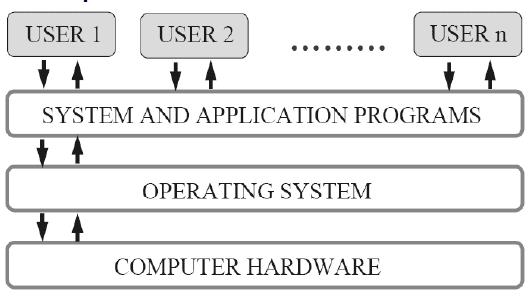Signal Acquisition (DSP)
Signal
Acquisition (General meaning)
Signal acquisition is a process that involves
measuring and converting physical or electrical phenomena into digital numeric
values that can be processed by a computer. The process can be used in many
contexts, including:
Sports medicine: Monitoring and measuring athlete
performance
Video broadcasting: The second stage of the
five-stage process of making video available for viewers, also known as
"backhaul"
GNSS/GPS antennas: The initial step where receivers
detect and lock onto satellite signals to determine a user's location
Signal
acquisition systems are used in
sports medicine to measure and monitor the performance of athletes in order to
improve their physical performance. It is also used to measure the evolution in
the increase of the strength of contraction and resistance to fatigue of the
muscles and, in this way, to corroborate the progress, success, or failure of a
specific sports training plan, or for a plan of rehabilitation after an injury.
Signal Acquisition (DSP)
Signal acquisition involving
transducers, sensors, and electrodes is fundamental in various fields such as
biomedical engineering, environmental monitoring, industrial automation, and
more. Here’s an overview of how signal acquisition works with these components:
Transducers,
Sensors, and Electrodes
- Transducers:
- Definition:
Devices that convert one form of energy (e.g., mechanical, thermal,
chemical) into another form (usually electrical signals).
- Examples:
Pressure transducers, temperature sensors, accelerometers, etc.
- Function:
Transducers generate electrical signals proportional to physical
quantities they measure, suitable for subsequent processing and analysis.
- Sensors:
- Definition:
Devices that detect and respond to physical inputs from the environment,
converting them into electrical signals.
- Examples:
Light sensors, gas sensors, humidity sensors, etc.
- Function:
Sensors capture environmental or process-related data and convert it into
electrical signals for measurement and control purposes.
- Electrodes:
- Definition:
Conductive surfaces that come into direct contact with biological tissue
or fluids to measure electrical activity.
- Examples:
Electrocardiogram (ECG) electrodes, electroencephalogram (EEG)
electrodes, electromyography (EMG) electrodes, etc.
- Function:
Electrodes pick up electrical signals generated by biological processes
(e.g., heartbeats, brain waves) for diagnostic, monitoring, or research
purposes.
Signal
Acquisition Process
- Signal Conditioning:
- Amplification:
Weak electrical signals from transducers, sensors, or electrodes are
amplified to levels suitable for further processing.
- Filtering:
Unwanted noise or interference is filtered out using analog or digital
filters to enhance signal quality.
- Linearization:
Some transducers require linearization to ensure output signals
accurately reflect the input quantity.
- Analog-to-Digital Conversion (ADC):
- Sampling:
Continuous analog signals are sampled at regular intervals to create
discrete digital representations.
- Quantization:
Sampled analog values are quantized into digital values with a specific
bit depth (e.g., 8-bit, 12-bit, 16-bit), determining resolution and
accuracy.
- Encoding:
The digital representation is encoded into binary format suitable for
processing by digital systems (e.g., microcontrollers, DSP processors).
- Digital Signal Processing (DSP):
- Processing:
Digital signals undergo various algorithms (e.g., filtering, Fourier
transform, statistical analysis) to extract meaningful information.
- Analysis:
Analyzing signal characteristics, detecting patterns or anomalies, and
deriving quantitative measurements.
- Data Transmission and Storage:
- Transmission:
Processed digital data may be transmitted via wired (e.g., Ethernet, USB)
or wireless (e.g., Wi-Fi, Bluetooth) communication protocols to centralized
systems or displays.
- Storage:
Data is stored in databases, local storage devices, or cloud-based
platforms for archival, analysis, and future reference.
Considerations
for Signal Acquisition
- Accuracy and Precision: Ensuring transducers, sensors, and electrodes provide
accurate measurements within specified tolerances.
- Frequency Response:
Assessing the range of frequencies over which transducers or sensors can
accurately capture signals.
- Calibration and Maintenance: Regular calibration and maintenance to ensure
reliability and consistency of measurements over time.
- Environmental Factors:
Considering factors such as temperature, humidity, and electromagnetic
interference that may affect signal quality and reliability.
Applications
- Biomedical Engineering: Monitoring physiological signals (e.g., ECG, EEG) for
healthcare diagnostics and research.
- Environmental Monitoring: Measuring air quality, water quality, and
environmental parameters using sensors for pollution control and research.
- Industrial Automation:
Monitoring process variables (e.g., pressure, temperature) in
manufacturing processes to ensure quality and efficiency.
- Aerospace and Automotive: Monitoring structural health, performance metrics,
and environmental conditions using sensors for safety and maintenance.
Signal acquisition with transducers,
sensors, and electrodes forms the foundational step in acquiring real-world
data for processing, analysis, and decision-making across various domains,
driving advancements in technology and scientific understanding.



Comments
Post a Comment